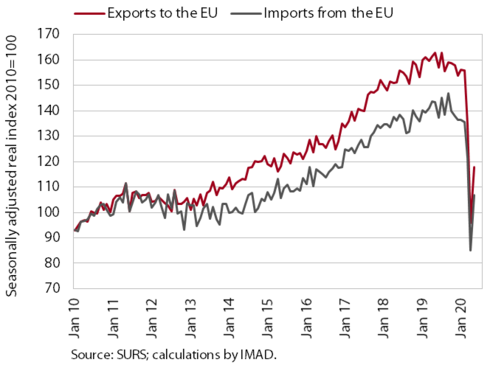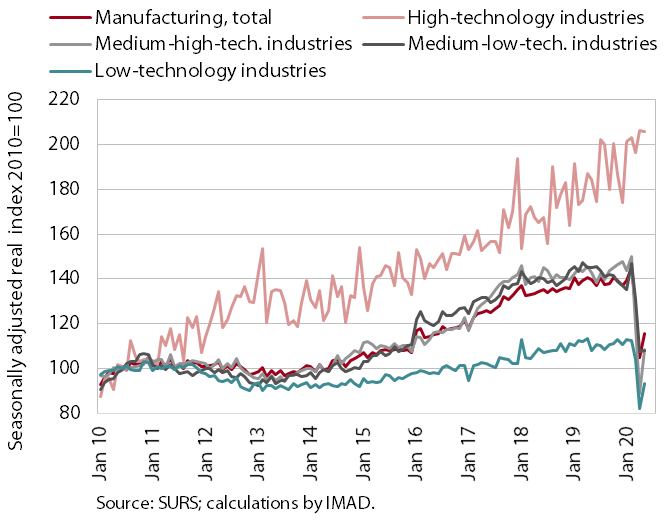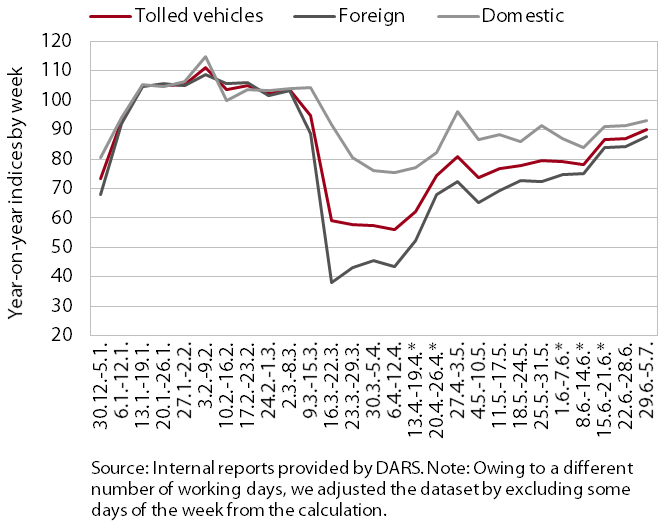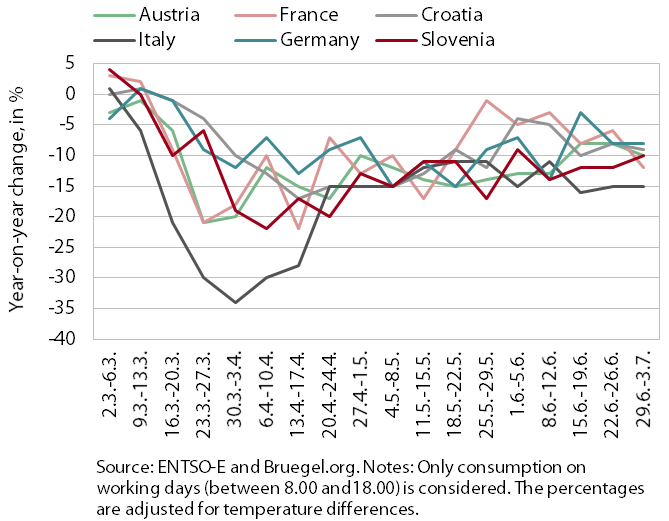Charts of the Week
Current economic trends from 6 to 10 July 2020: exports and imports of goods, production volume in manufacturing, traffic of electronically tolled vehicles and electricity consumption
The indicators of economic activity are still significantly lower than in the same period of last year, but they have been gradually improving after the trough reached in April. With the loosening of containment measures and a gradual revival of production in Slovenia and its main trading partners, the volume of production in manufacturing and trade in goods increased somewhat in May. Data on freight traffic and electricity consumption indicate that the year-on-year decline in economic activity decreased further in June and at the beginning of July.
Exports and imports of goods, May 2020

The year-on-year decline in goods trade in May was smaller than in April; it remained the largest in trade with EU countries. The smaller decline in goods exports in May was mainly due to the relaxation of containment measures and a gradual revival of production in Slovenia and its main trading partners. Since the beginning of the spread of the epidemic in Europe, exports to EU countries dropped most notably (almost by 30% year on year, the most in April), particularly to Italy, France and Germany. Lower exports were recorded for all main product groups, particularly road vehicles and vehicle parts and accessories and electrical machinery and equipment. Since the beginning of the epidemic, imports have also dropped considerably, despite an increase in May. This was mainly due to significantly worse expectations about orders and and a decline in production, investment in machinery and equipment and household consumption.
Production volume in manufacturing, May 2020

Manufacturing production recovered in May with the loosening of containment measures but remained significantly lower than before the epidemic. With the restart of production in some main export-oriented companies, production in medium-high-technology industries increased the most. Compared with April, the year-on-year decline in production in these industries on average almost halved, while the decline in medium-low-technology industries remained similar. The measures taken during the epidemic had a smaller negative effect on production in high-technology industries (the pharmaceutical industry and the manufacture of ICT equipment) and some low-technology industries (the food-processing and paper industries), which recorded similar production levels in the first five months to those one year earlier.
Traffic of electronically tolled vehicles on Slovenian motorways, July 2020

At the beginning of July, freight traffic on Slovenian motorways was still a tenth lower than before the epidemic. A more than 40% decline in the first weeks after the declaration of the epidemic was followed by an improvement in April and stagnation in May. In the second half of June, traffic increased again and was around 10% lower year on year in the first week of July. The distance travelled by domestic and foreign trucks declined by 7% and 12% respectively.
Electricity consumption, July 2020

The year-on-year decline in weekly electricity consumption decreased at the beginning of July relative to June. After weekly consumption was by around 12% to 14% lower year on year in June, the decline decreased to 10% at the beginning of July. Among our most important trading partners, France and Croatia recorded a larger decline at the beginning of July than on average in June, while the decline in Austria, Germany and Italy remained roughly unchanged.
